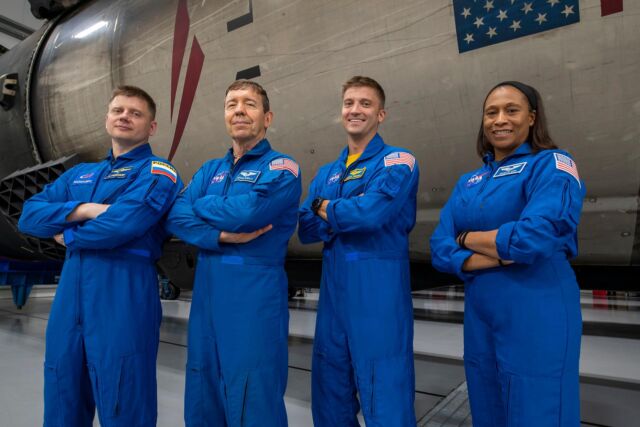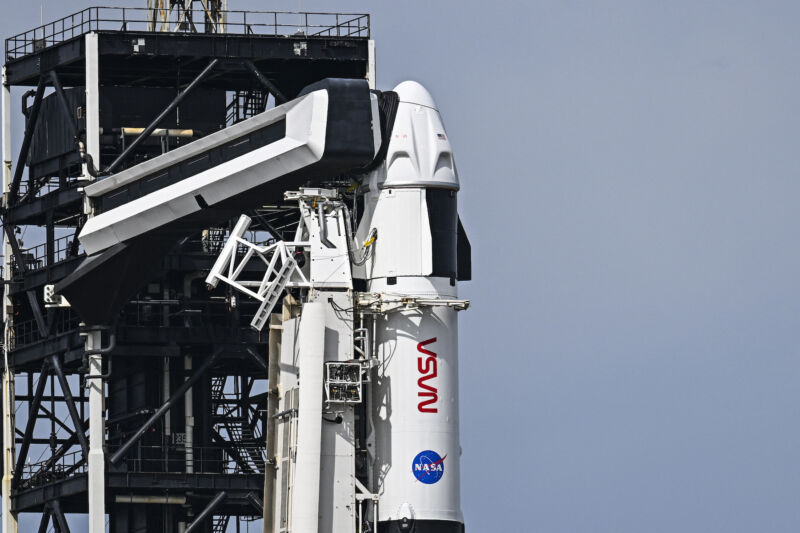SpaceX’s oldest Crew Dragon spacecraft is about to launch on its fifth mission to the International Space Station, and engineers are crunching data to see if the fleet of Dragons can safely fly as many as 15 times.
It has been five years since SpaceX launched the first Crew Dragon spacecraft on an unpiloted test flight to the space station, and nearly four years since SpaceX’s first astronaut mission took off in May 2020. Since then, SpaceX has put its clan of Dragons to use ferrying astronauts and cargo to and from low-Earth orbit.
Now, it’s already time to talk about extending the life of the Dragon spaceships. SpaceX and NASA, which shared the cost of developing the Crew Dragon, initially certified each capsule for five flights. Crew Dragon Endeavour, the first in the Dragon fleet to fly astronauts, is about to launch on its fifth mission to the space station.
This ship has spent 466 days in orbit, longer than any spacecraft designed to transport people to and from Earth. It will add roughly 180 days to its flight log with this mission.
Liftoff of Crew Dragon Endeavour from Florida aboard a Falcon 9 rocket is scheduled for 10:53 pm EST Sunday (03:53 UTC Monday). You can watch NASA TV’s live coverage of the launch below.
Commander Matthew Dominick, pilot Michael Barratt, mission specialist Jeanette Epps, and Russian cosmonaut Alexander Grebenkin put on their SpaceX pressure suits and strapped into their seats inside Crew Dragon Endeavour Sunday evening at NASA’s Kennedy Space Center.
This mission, known as Crew-8, will launch on a brand new Falcon 9 booster, which will return to landing a few minutes after liftoff at Cape Canaveral Space Force Station. Officials delayed the launch three days due to poor weather conditions across the Atlantic Ocean, where the capsule would ditch into the sea in the event of a rocket failure during the climb into orbit. Assuming the launch occurs Sunday night, the four-person crew will dock at the space station around 3 am EST (0800 UTC) Tuesday.
Crew-8 will replace the four-person Crew-7 team that has been at the space station since last August. Crew-7 will return to Earth in about one week on SpaceX’s Crew Dragon Endurance spacecraft, which is flying in space for the third time.
The Crew-8 mission will return to Earth for a reentry and splashdown off the coast of Florida in late August of this year, wrapping up Crew Dragon Endeavour’s fifth trip to space. This is the current life limit for a Crew Dragon spacecraft, but don’t count out Endeavour just yet.
Fleet management
“Right now, we’re certified for five flights on Dragon, and we’re looking at extending that life out,” said Steve Stich, NASA’s commercial crew program manager. “I think the goal would be for SpaceX to say 15 flights of Dragon. We may not get there in every single system.”
One by one, engineers at SpaceX and NASA are looking at Dragon’s structural skeleton, composite shells, rocket engines, valves, and other components to see how much life is left in them. Some parts of the spacecraft slowly fatigue from the stresses of each launch, reentry and splashdown, along with the extreme temperature swings the capsule sees thousands of times in orbit. Each Draco thruster on the spacecraft is certified for a certain number of firings.
Some components are already approved for 15 flights, Stich said in a recent press conference. “Some, we’re still in the middle of working on,” he said. “Some of those components have to go through some re-qualification to make sure that they can make it out to 15 flights.”
Re-qualifying a component on a spacecraft typically involves putting hardware through extensive testing on the ground. Because SpaceX reuses hardware, engineers can remove a part from a flown Dragon spacecraft and put it through qualification testing. NASA will get the final say in certifying the Dragon spacecraft for additional flights because the agency is SpaceX’s primary customer for crew missions.
The Dragon fleet is flying more often than SpaceX or NASA originally anticipated. The main reason for this is that Boeing, NASA’s other commercial crew contractor, is running about four years behind SpaceX in getting to its first astronaut launch on the Starliner spacecraft.
When NASA selected SpaceX and Boeing for multibillion-dollar commercial crew contracts in 2014, the agency envisioned alternating between Crew Dragon and Starliner flights every six months to rotate four-person crews at the International Space Station. With Boeing’s delays, SpaceX has picked up the slack.

The Boeing delays have been good for SpaceX in the sense that NASA has awarded contract extensions to carry the Crew Dragon program through the end of the 2020s. NASA has purchased 14 operational Crew Dragon flights from SpaceX, compared to six Starliner flights from Boeing. On Sunday night, SpaceX is counting down to liftoff of the eighth operational Crew Dragon flight for NASA, and the 13th crew flight on Dragon overall.
While SpaceX is flying astronauts for NASA, the company is also launching all-private crews to orbit through deals with the Houston-based company Axiom Space and billionaire Jared Isaacman, who plans to perform the first commercial spacewalk later this year.
Business is booming, but SpaceX is reaching certification limits on the Dragon spacecraft faster than expected.
SpaceX has four human-rated Dragon spaceships, plus three Dragons designed for cargo missions. A fifth Crew Dragon is on track for completion later this year, and will probably make its first flight in early 2025, according to Stich. SpaceX officials have said this will be the final Crew Dragon spacecraft the company will build, and the fleet of five capsules will be enough to satisfy demand for Dragon missions until the next-generation Starship vehicle is ready to take over.
It will be at least several years, and possibly longer, until Starship is certified for human launches and landings. Until then, Dragons will continue launching on Falcon 9 rockets, even if some satellite missions shift to Starship.
SpaceX has flown some of its reusable Falcon 9 boosters as many as 19 times, nearly double the rocket’s original life expectancy, and is looking at certifying Falcon 9s for as many as 40 launches and landings.
Stich said NASA and SpaceX could settle on an intermediate number of flights, somewhere between five and 15, when they re-certify the Dragon spaceships. A later round of testing and reviews could eventually get to SpaceX’s 15-flight goal. “I would like to get out to seven to 10 flights for Dragon, but we’ll see where we get,” he said.
There are some parts, like heat shield material and parachutes, that SpaceX still needs to replace after each flight.
